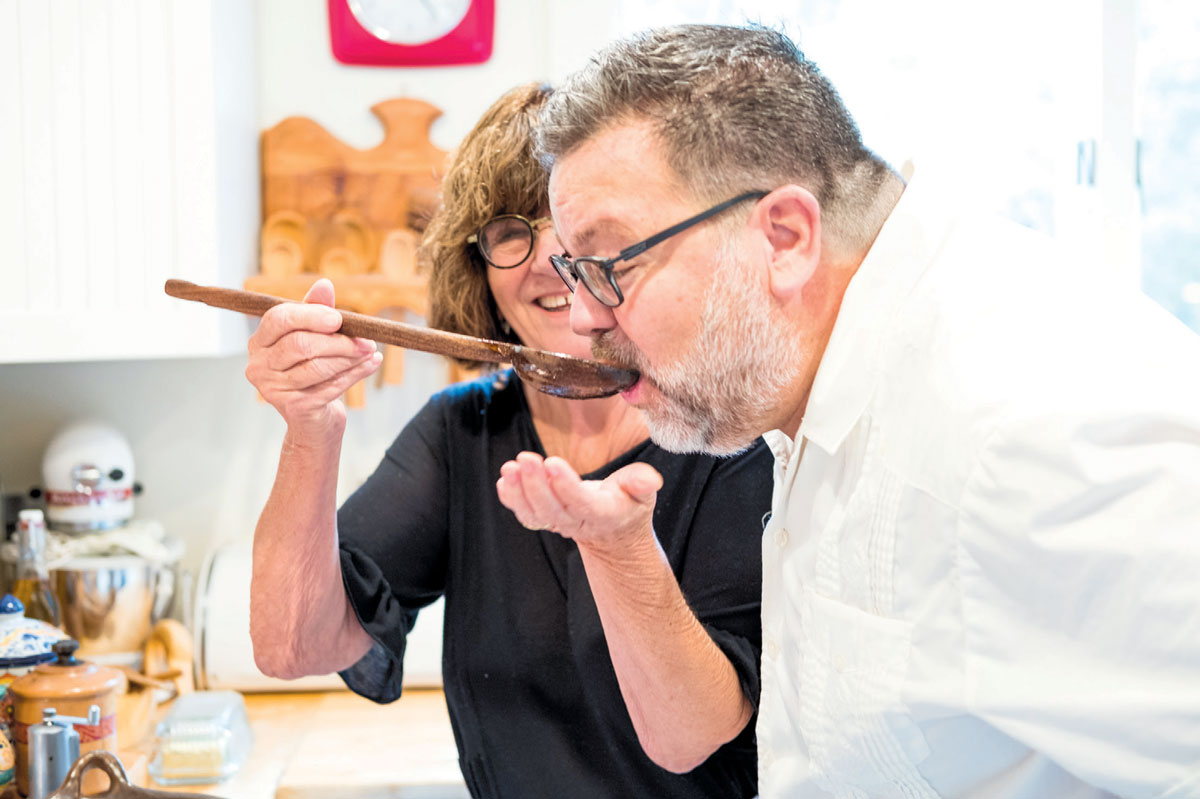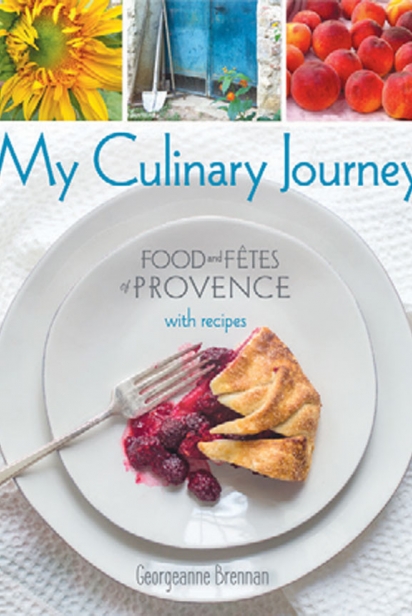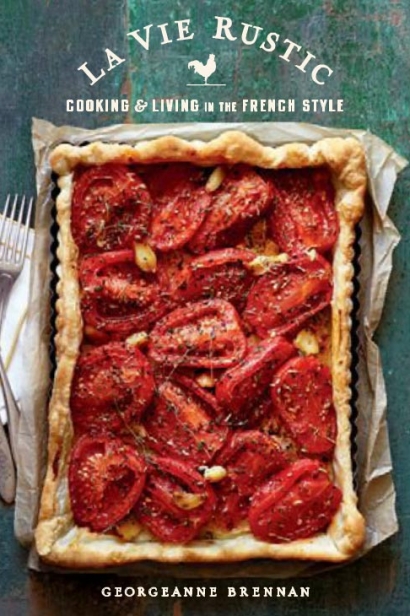Books for cooks: Steve Sando on Georgeanne Brennan
Steve Sando on Georgeanne Brennan
In celebration of the publication of two new books by Georgeanne Brennan, the prolific and beloved author and regular contributor to Edible Marin & Wine Country, a tribute by her friend Steve Sando, owner of Napa’s Rancho Gordo.
In the early 1990s, the California Food Revolution, as Joyce Goldstein defines it, was in full swing, but a lot of us didn’t recognize it at the time. Even if we ate occasionally at Chez Panisse, Stars or Square One, we just thought food was getting better. We had no idea of the tsunami that was swelling right in front of us.
I remember the thrill of shopping in front of the Ferry Building in San Francisco in a space that previously belonged to a truly ugly freeway that had come down during the 1989 earthquake. Everyone seemed in a daze. The Ferry Building itself seemed open and exposed. The farmers and the customers seemed equally surprised by the new environment.
“You mean I can grow this, bring it here and you’ll give me cash?” the vendors seemed to say.
“Why are these beets so weird looking?” we’d ask eagerly. “Is that kale or leather?”
I remember buying a big bag of okra, just because I could. The young vendor looked at me in amazement.
“What are you going to do with it?” he asked.
I shrugged and we both laughed.
Discovering food was fun.
I lived in a tiny 500-square-foot apartment with a foldout Murphy bed on Nob Hill. I was broke, worked several jobs and my real joy was hosting dinner parties. The meals were mostly not-very-good variations of Pasta Primavera but I was learning, my friends were happy to have someone who liked to cook, the jazz was loud and we followed every meal with dominoes and bitter after-dinner drinks. My heroes were cookbook authors like Diana Kennedy, Marcella Hazan, Paula Wolfert and Patricia Wells. Even though my finances were meager, I could feel my quality of life getting better.
One day by chance I bought a book called Potager: Fresh Garden Cooking in the French Style. I liked it mostly for the beautiful photos. I cooked from it and I soon discovered that it was one of those books where the recipes just worked. I dug deeper and suddenly, after years of thinking myself to be a glamorous urban sophisticate, fueled by laughs and good cocktails, I had the strangest desire to stick my hands deep in the dirt.
Reading Potager, I felt I actually needed to do this in order to continue and move forward. I had no idea who the author, Georgeanne Brennan, was, and I also had no idea how she had already influenced my life in a significant way.
If you talk with Georgeanne about her story and her many successes, she seems to have just fallen into her situation, but I don’t buy that. There perhaps was no master plan, but you have to work hard to be lucky and be prepared to pounce on opportunities when they come your way. She started out as a well-traveled schoolteacher, perhaps longing for something more than the classroom, and when her friend Charlotte approached her about starting a seed company together, she leapt at the chance, even though common sense and a lack of any business or agriculture background would have suggested this wasn’t a good idea. With almost no fanfare, La Marche Seeds was born.
The two friends jumped in with both feet. Georgeanne focused on French vegetables and found most of her contacts by simply calling and asking them for seeds. She was tickled to have access to some of the vegetables she loved from her travels and the French were happy to spread a part of their culture to the United States. Living in Vacaville, near Sacramento, a key agricultural spot with proximity to San Francisco, meant Georgeanne had access to farmers, as well as the growing food scene in the Bay Area. There’s little doubt that the lacinato kale or the chiogga beets I purchased at the farmers’ market that foggy Saturday morning long ago were there in part because of Georgeanne Brennan.
A catalog followed and then Georgeanne did something that must have seemed arbitrary at the time, but its significance reveals her instincts. Instead of sending the catalog and samples only to the Home and Garden editors of newspapers and magazines, she also sent them to the Food editors. Today this makes perfect sense, but at the time no one had thought to do it. Press followed from Vogue, the New York Times and even Family Circle.
Like any good marketer, Georgeanne knew she had to do more than just sell seeds to growers and gardeners, so she developed recipes and, of course, she had a knack for instruction, probably from her days as a teacher. The recipes led to books, starting with collaborations with local writer Isaac Cronin, and together they developed recipes that worked. “I learned recipe development and how to write a recipe from Isaac,” she says. “He was very, very good.”
In 1992, Chronicle Books published Potager, Georgeanne’s first solo effort, and while surely not the first book written about seasonal cooking and eating, the chapters were organized by seasons and the recipes included ingredients found in a typical kitchen garden. For readers like me, it was revolutionary. Even more important, the feeling and mood were French, but I could easily imagine translating this into my own life. I know many other readers felt the same way.
“These things are all doable,” says Georgeanne. “It’s really a way of thinking. Then taking that thinking and applying it to whatever you can. Not everybody wants to have chickens in their backyard, or can have them, but it’s the idea that chickens lay eggs. That’s where eggs come from. So you can buy free-range chicken eggs and they’re going to be different.”
Many other books followed Potager, all written with Georgeanne’s great sense and sensibility. And she is, thankfully, not finished teaching us yet. This fall, Georgeanne published My Culinary Journey: Food & Fetes of Provence with Recipes, which takes the foundation she laid with her seminal book, A Pig in Provence, and expands upon it with recipes and photos. Early 2017 will bring Georgeanne’s La Vie Rustic, a book on the French way of thinking about food and life, including the potager, the garden, the orchard, the barnyard, wild things and water.
“This book is really the culmination of all those years. The seeds, living in France, the gardening, the writing and the cooking,” Georgeanne says.
For me, Georgeanne’s magic is her ability to write about something as exotic as truffle etiquette, or the tradition of herding sheep, and have it all makes perfect sense to those of us “off the farm.” Under Georgeanne’s influence, I am inspired to break out of my computerto- bed-and-back-again routine and go out and forage wild greens, make a cassoulet, soak stale bread in milk or snip herbs from my own potager. My versions aren’t as grand, but Georgeanne isn’t focusing on the grandness. That’s not what you take away from her writing. You come to understand that, in a real sense, your respect for the ingredients is a large part of the journey.
“Time and place is really important for me,” she notes. “I’ve come to really understand that. It’s the driving force of my writing.”
I think back to my apartment on Nob Hill and my growing confidence in the kitchen and it’s absurd to have imagined then that I’d one day meet so many of these culinary heroes, and yet I have. I got to meet Georgeanne through her husband, Jim. Jim, who met his wife over a telex machine in the early days of La Marche, uses his own lifetime of experience in California agriculture to coordinate the crops for my company, Rancho Gordo.
You never get the sense that Georgeanne is out to impress you. She’s never pedantic. It’s almost as if she’s a dear friend revealing secrets and there’s nothing she’d like more than for you to incorporate them into your life. Her world is fairly incredible and her gifts are world renowned, but if you catch her at home, there’s a good chance she’s just come in from giving scraps to the chickens or adding manure to her kitchen garden, and if you’re patient and hang around long enough, you’re sure to get something delicious to eat, along with a good story.
The heirloom seeds, the recipes, the books, the travels and the food Georgeanne has touched are all successes by anyone’s standards, but I would say that her real success is that she’s been able to affect people’s lives and make them better. For me, that’s her legend.






